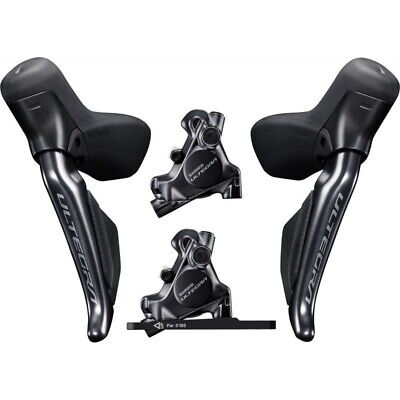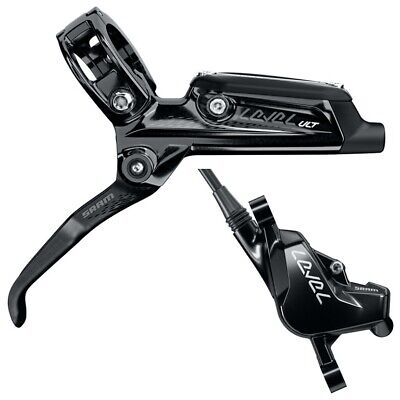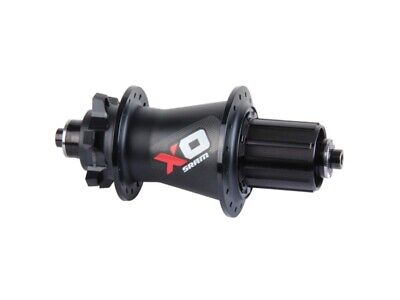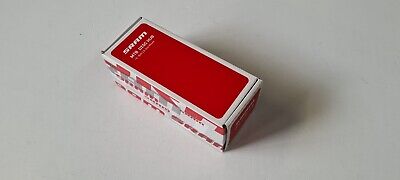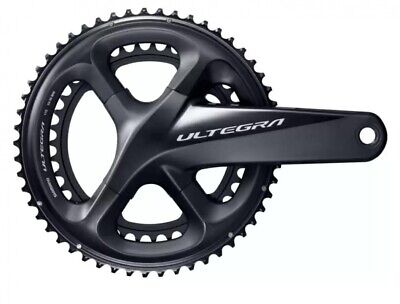MTB Mono or Biammortized
MTB Mono or Bi-Axle: Discover Which is the Right Choice for Your Riding Style
Mountain bikes are bicycles designed to tackle rough and uneven trails, such as mountain paths or dirt roads. Unlike regular road bikes, mountain bikes have sturdy frames and components, wide tires with deep treads, and most importantly, shock-absorbing systems that absorb shocks when riding over rough terrain.
Shock absorber systems are critical for providing traction, stability, and control over difficult terrain. There are mainly two types of shock absorbers for mountain bikes: mono-shocks and bi-shocks. Let's analyze the pros and cons of both solutions in detail. MTB Mono or Biammortized
Single suspension mountain bike

As the name suggests, single shock mountain bikes have only one shock absorber, usually centrally located between the frame headstock and the top of the front fork. It is the simplest and most economical damping system.
Advantages of monoamortization:
- Low cost: having only one shock absorber means lower costs in both production and maintenance of the bike. The single suspension mountain bikes are therefore generally cheaper than their twin-armed counterparts.
- Lightweight: the single-drive system is lighter than the double-drive system, providing a lower overall weight of the bike. This translates into better climbing performance.
- Simplicity of setup: with a single shock there are fewer adjustments to make than with a dual system. It is therefore easier to set the single shock to your weight and riding style.
- Effective pedaling: the rocking motion of the single shock absorber affects pedaling efficiency less than a double shock absorber. The feeling of "pumping" is less.
- Easy maintenance: having only one shock absorber makes it easier to maintain and clean the bike. Fewer components also mean less chance of mechanical failure.
Disadvantages of monoamortization:
- Less control and traction at the rear: the absence of a dedicated rear shock absorber results in less rear wheel grip on rough terrain. Increased risk of skidding and loss of control.
- Worse shock absorption: a single shock absorber cannot optimally absorb shocks from both front and rear wheels. Comfort and control suffer on very rough terrain.
- Conditional geometry: the presence of the central shock absorber affects the geometry of the frame, which must be designed around it. The design freedom of the frame itself is affected.
- Imbalanced pedaling: in single-shock bikes, especially those with high travel, the rear wheel tends to rise during shock compression. This results in less smooth and efficient pedaling.
- Lateral deflection: when cornering, mono-damping causes more lateral deflection of the frame. As a result, the bike is less precise and responsive to lateral stress. MTB Mono or Biammortized eco the disadvantages
Bi-mountain bike

Biamortized mountain bikes, as the name implies, have two separate shock absorbers: one front and one rear. The front shock is always positioned between the head tube and fork, while the rear shock acts between the frame and seatpost dropout.
Advantages of biammortization:
- Superior traction and control: the presence of a dedicated rear shock absorber significantly improves rear wheel traction on rough terrain. The bike feels more stable and controllable.
- Excellent comfort: the dual shock-absorbing system can best absorb both front and rear shocks. Riding a bi-axle bike over very rough terrain is significantly more comfortable.
- Excellent responsiveness: thanks to the perfect shock management on both wheels, the dual-mounted bikes provide excellent responsiveness and ride feel even on technical trails.
- Optimized geometry: because it is not constrained by the presence of a central shock absorber, the frame geometry of a twin-axle bike can be optimally designed, ensuring better handling and performance.
- No influence on pedaling: the presence of two separate shock absorbers avoids any negative influence on cycle-pedaling, which is smooth and effective even in compression. MTB Mono or Biammortizzata eco le vantagi
Disadvantages of biammortization:
- High cost: the two shock absorbers and more complex components make bi-axle mountain bikes significantly more expensive than their single-axle counterparts.
- Higher weight: the dual shock-absorbing system means the overall weight of the bike is necessarily higher, at the expense of uphill performance.
- More complex maintenance: with two shock absorbers, routine and extraordinary maintenance is more laborious. The possibility of mechanical failure also increases.
- More complex settings: having to calibrate two separate shocks, compression/excursion adjustments are more complex and subject to compromise.
- Less efficient pedaling: some of the latest bi-axle systems tend to lower the rear wheel under braking, slightly reducing pedaling efficiency.
In summary, the choice between mono and bi-drive depends greatly on the use and performance required by the biker. Monomounts are ideal for entry-level mountain bikes or for use on non-extreme trails, where they still provide good performance at low cost.
Double-axles express maximum performance on the most technical and severe terrain, thanks to superior traction and control. Ride comfort is excellent even on the roughest descents. However, the bike feels heavier and more complex.
Experienced and savvy riders, who tackle challenging trails and want maximum performance, tend to prefer bi-mountain bikes despite the higher price. In contrast, novice bikers or those with a need for cost containment may find single-axle bikes a good compromise, without excessive sacrifice in performance on easy to medium trails.
The unique characteristics of single- or dual-mount MTBs.
Single and double-drive mountain bikes have some unique and distinctive features:
Single-drive mountain bikes:
- Compact and clean frame - The absence of the second shock absorber allows for a more compact and clean frame line.
- Lightness-Thanks to the single shock absorber and reduced components, single shock absorbers are lighter and more suitable for climbing.
- Simplicity of setup-With only one suspension to adjust, setting up the monoshock is easier and faster.
- Lateral stiffness - The bottom bracket shell makes the frame more rigid laterally, with benefits for riding precision.
- Versatility - Single-axles are well suited for a variety of uses, from cross country marathon to light freeride.
Bi-mountain bikes:
- Rear traction-The presence of the dedicated rear shock absorber significantly improves traction and control.
- Optimal absorption-The dual suspension best handles shocks on both wheels for greater comfort.
- Free geometry-With no constraints due to the central shock absorber, the frame design can be optimized.
- Responsiveness - Perfect compliance on both wheels makes the bike more responsive and sensitive in technical riding.
- Downhill-Thanks to the cushioned and controlled rear end, bi-axle MTBs excel in extreme downhill.
In summary, mono and bi-mountain bikes have unique peculiarities that make them suitable for different uses and riding styles in the mountain bike world. The choice depends on required performance, specialization, and budget.
FAQ (frequently asked questions) - MTB Mono and Biammortized
1. What is the difference between a mono and a bi-mountain bike (full suspension)?
- A mono mountain bike has only a front suspension, which absorbs shock for the front wheel. A bi-mountain bike has both front and rear suspension, offering better shock absorption and more control over rough terrain.
2. What are the advantages of a bi-mountain bike over a mono mountain bike?
- Bi-axles offer more comfort and control on rough trails due to the additional rear suspension.
- Improved traction and grip in technical sections of the course.
- Less fatigue during long rides as the rear suspension helps absorb shocks and vibrations.
3. Are bi-mountain bikes suitable for all types of cycling?
- Bi-mountain bikes are versatile and suitable for many styles of cycling, including technical trails, downhill and all-mountain. However, for cross-country or smooth road riding, a mono might be more efficient.
4. Do biammortized bikes require different maintenance than mono?
- Yes, the bi-axles require slightly more complex maintenance because of the additional parts. It is important to check and lubricate the suspension regularly, checking the pressure and efficiency of the shock absorbers.
5. What should I consider when choosing between a mono and a bi-axial?
- Consider the type of terrain on which you plan to ride primarily. If you face technical, rough trails, a biambic might be the best choice. If you prefer smoother trails and long rides, a mono might be more suitable.
6. Are the bi-axles heavier than mono?
- Yes, in general, twin-axle bikes are slightly heavier because of the additional rear suspension and related parts. However, technological advances have reduced this weight difference over the years.
7. What is the impact on pedaling speed and efficiency between the two options?
- Le MTB bi-amortized can absorb some of the pedaling power due to the suspension, slightly reducing efficiency on flat terrain. However, the increased traction and control on rough terrain can offset this effect.
8. Are biamps more expensive than mono?
- Yes, usually mountain bikes with suspension tend to be more expensive because of the additional parts and technology required. However, there are options for all price ranges. MTB Mono or Biammortizzata echo the prezzii
9. Can I convert a mono mountain bike to a bi-mountain bike?
- Generally, it is not possible to completely convert a mono into a bi-axle because of structural differences. It is more practical to consider the purchase of a new bi-axle if you want to experience the added comfort and control of rear suspension.
As a MTB expert, I have given all the answers on MTB Mono or Biammortized. If you think I should mention something more, leave a comment below or write to us at info@bici-bici.it



